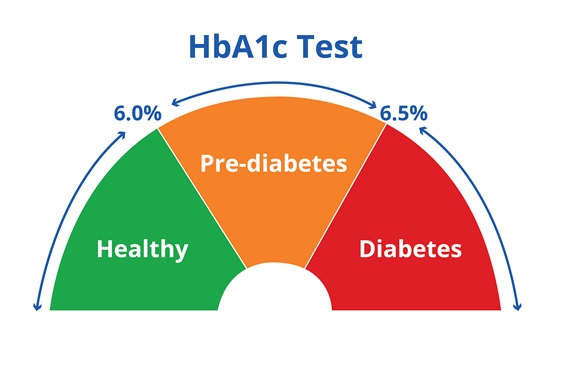
The burden contributed by diabetes and the types of diabetes have been discussed earlier, now let us discuss on its common symptoms and diagnosis of diabetes on par with its types.
By now, we know that this condition is mostly seen in children and adolescents. The onset of this type is usually abrupt, the only visible presentation of this condition include
The presentation may also extend to
These signs can be often mistaken for any flu or virus, urinary tract infections. The initial signs are often confusing but it’s always better to consider type 1 diabetes as the black sheep especially if diabetes runs in your family.
At later stages Diabetic ketoacidosis (DKA), is a common yet a serious manifestation of type 1 diabetes, where your blood glucose is alarmingly high and can make you pass out for a long time or even lead to death. The common presentation is slurry speech, frequent urge to pee, weakness, irritability, finally passing out.
Your doctor usually gets a Random blood sugar test done initially, that is, regardless of when you had your last meal, blood sample is drawn and checked for sugar levels, if it’s >200 mg/dL, it’s an initial indicator for the condition, following this an overnight fasting blood sugar levels are tested, if the value is >130 mg/dL, indicates diabetes, following this A1c test which is a 90 day average blood glucose level, is performed, a value of >6, confirms diabetes.
We know type 1 diabetes, usually affects toddlers , adolescents, at times young adults and hence to differentiate between the exact type, your physician gets an autoantibody test done before confirming the exact type of diabetes and the genetic factor causing it.
The onset of this condition is usually at 35-40 years of age, often diagnosed at later stages as some patients are asymptomatic and the condition is identified on accidental screening or in some instances they ignore the warning signs and the condition itself is manifested only when the symptoms are well established or any organ damage becomes apparent.
In this scenario, it’s quite safe to know the presenting features of type 2,
At later stages,
A Random blood sugar level (>120 mg/dL), Fasting blood sugar (>100 mg/dL), Post prandial blood sugar, that is blood sugar level taken 2 hours after meal (>140 mg/dL) indicates type 2 diabetes, along with this your doctor orders for an A1c test for confirmation of the condition.
Pre diabetes is a stage before type 2 diabetes, where the blood sugar levels are high but not high enough to categorise as diabetic. It necessarily means you are at a higher risk of developing diabetes in the near future.
Usually an A1c test confirms pre diabetic state, the image shows scales of A1c test and its interpretation
The symptoms are usually vague and overlaps with the presentation of type 1 or 2 diabetes. If you are presenting with the above mentioned symptoms during pregnancy, make sure to mention you doctor of the same, diabetes diagnosed during first or second trimester is usually manageable with medications and lifestyle modifications. You may be at a risk of developing diabetes in the later stages still it can be averted with better control over your diet & blood sugar.
 Medinexus, an app dealing with childhood obesity launched
Medinexus, an app dealing with childhood obesity launched
 Conference on Diabetes
Conference on Diabetes
 Navigating Hyperthyroidism from diagnosis to care
Navigating Hyperthyroidism from diagnosis to care
Copyright @2022 Dr Suresh Damodharan. Designed and Maintained by ITindustries.com